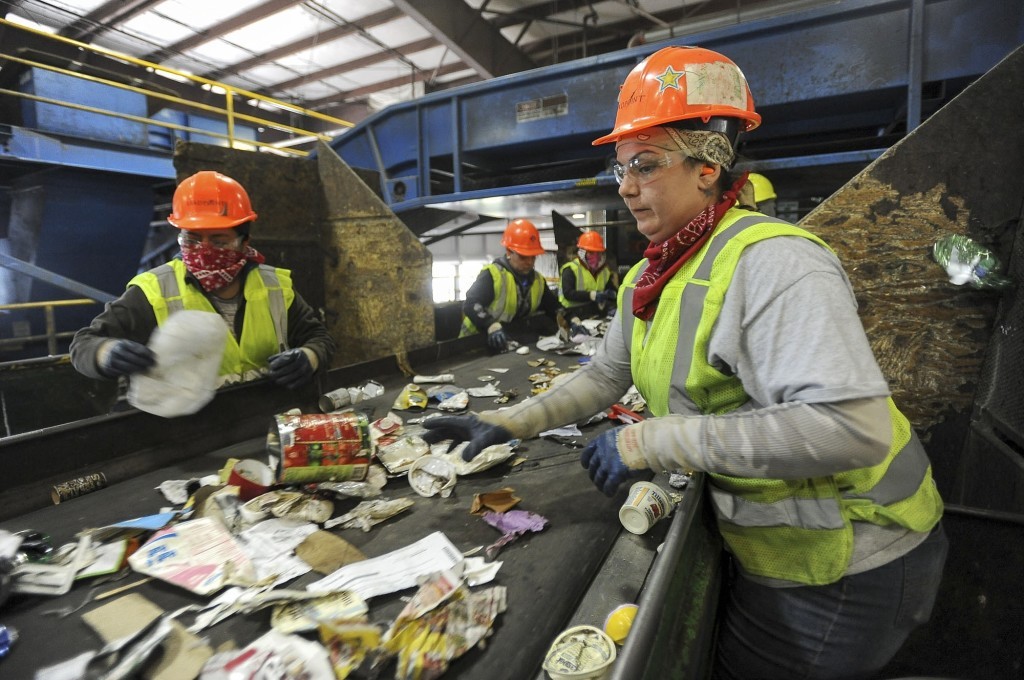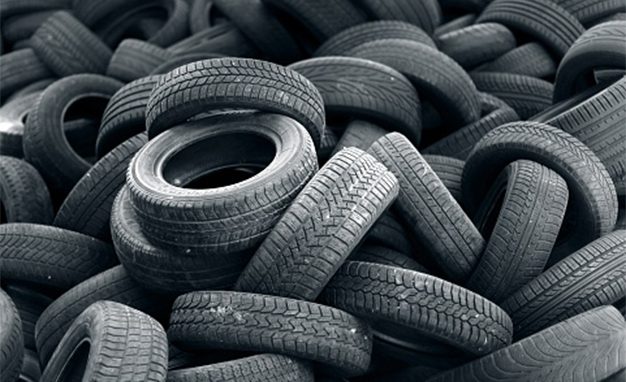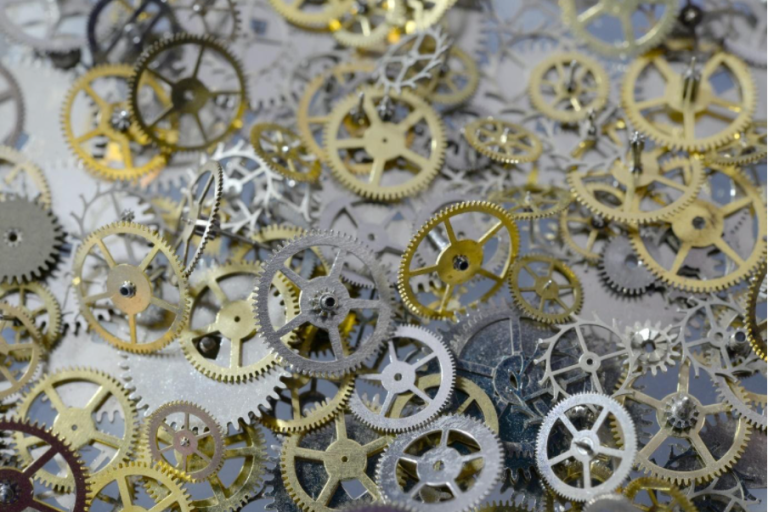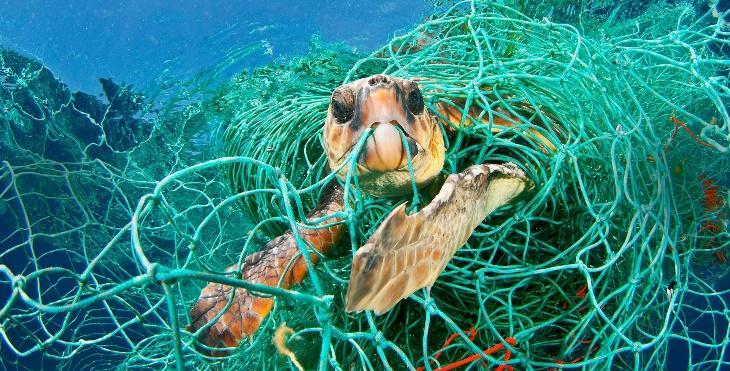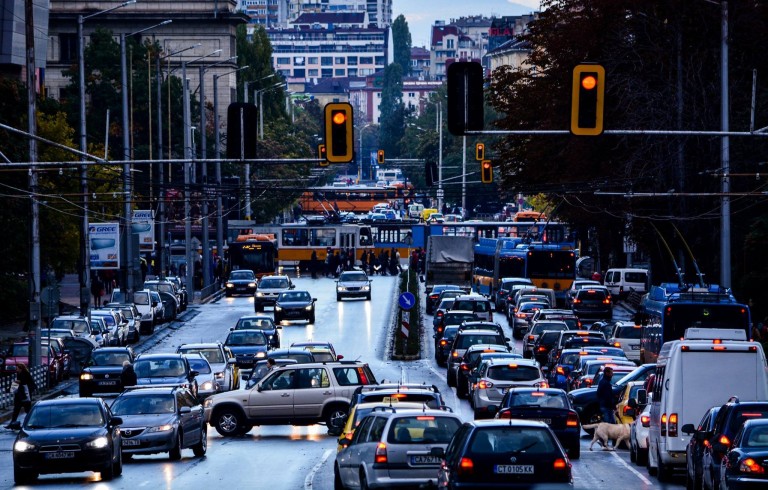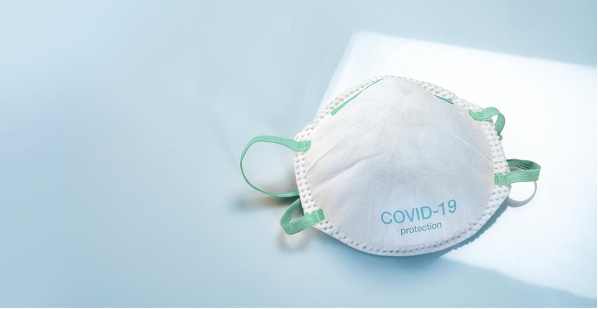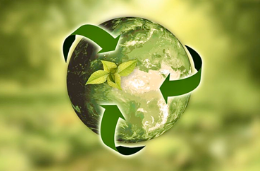TYPES OF RECYCLING
The Waste Framework Directive 2008/98/ЕC is at the heart of the EU waste management policy. It introduces a 5 stage hierarchy of waste management actions, as the prevention and reduction are the best options, followed by the reuse, recycling, other forms of waste recovery, and the disposal of waste to the landfills as a final measure.
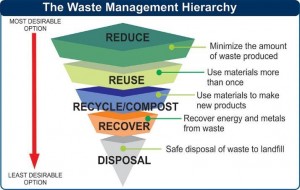 The four R-s
The four R-s
- Reduce – minimizing the production
- Reuse – reuse materials
- Recycle – recycle in order to produce new products
- Recover – waste recovery
- Disposal – disposal to landfill
The order is important! The closer we are to the top of the list, the less we generate waste and the less we damage the environment with logging, mining, excessive water use, and so on.
Recycling is the third option in the waste management hierarchy. Although recycling contributes to the conservation of resources and waste reduction, it is important to remember that there are economic and environmental costs related to the collection and the recycling of waste. Therefore, recycling should only be considered for waste that can’t be reduced or reused.
The Waste Management Act provides the following definitions
Recycling is any recovery operation by which waste materials are processed into products, materials or substances for their original purpose or for other purposes. It includes the processing of organic materials, but it doesn‘t include recovery for energy production and processing into materials that will be used as fuels or for bulk operations.
Recovery is any activity that has as its main outcome the use of the waste for a useful purpose by replacing other materials that would otherwise be used to fulfill a particular function or for the preparation of the waste to perform that function in a production plant or in the economy as a whole, with the exception of energy recovery and processing in materials that will be used as fuels.
Often these two concepts are not used correctly. Maybe the reason is that a number of recovery operations precede the actual recycling of waste.
What is recycling?
Our first thought of recycling is the separation of our glass, plastic, paper and cans from the rest of our waste, their collection and transfer to waste disposal centers or disposal in the containers for separate collection. This step – a recovery operation – is the first step in the recycling process.
Recycling is the process by which waste is given a second life and they become a raw material. It includes several waste recovery operations until the actual recycling is achieved:
- collection of waste;
- sorting and cleaning of waste;
- processing into a usable form (e.g. glass cullet or plastic granulate);
- use of the processed material (instead of natural raw materials) in combination with other materials for the production of new products;
The benefits of recycling
- Reduces the landfills area and their negative impact on the environment;
• Saves natural resources such as plants, minerals, ores, fuels, water; - Favors the protection of the environment and ecosystems;
• Lower price of the secondary raw materials compared to the primary raw materials;
• Saves energy;
• Lower level of harmful emissions in the water and air (every ton of recycled waste material saves 2,8 tons of greenhouse gases);
• Reduces the costs of landfilling;
• Reduces the need to import raw materials and the associated with that process costs;
• Creates jobs.
What can be recycled?
Paper and cardboard
Paper and cardboard represent nearly one third of the average household waste. An office employee who uses only paper with pure fiber, requires 12 trees to be cut per year!
Paper and cardboard are made of cellulose – a building material of the cellular structure of higher plants. The separation of the cellulose occurs by means of reagents /solutions of bases, salts of alkali metals/, which dissolve the non-cellulosic part.
Waste paper and cardboard are one of the most important valuable types of secondary raw materials. From 1 ton of waste paper can be produced 0.7 tons of paper or cardboard, and this prevents the destruction of about 4 tons of trees, prevents the use of 500m3 of water, 4100 Kw/h electricity and 100 man hours labor costs.
A sheet of paper can be recycled about seven times because the fibers become weaker with each subsequent recycling. From the waste paper can’t be obtained high quality products, but they can be used for the production of cardboard boxes, packing materials, building boards and plastic fillers.
It is impossible to obtain high-quality paper from waste paper because there are many impurities of organic and inorganic origin, such as polymer reinforcing additives, printing inks, bleach, mineral abrasives. It is possible to make the so-called deep purification of waste paper, which helps to be removed most of the impurities.
Plastics
There are about 50 different groups of plastics, with hundreds of varieties. Most of the types are recyclable. In the plastic processing technologies, there is a complex aspect related to the operation that precedes each subsequent process of their processing. It‘s about their grinding and the complicated thing here is that most plastics are viscous, viscoelastic, plastic, soft, foamy, fibrous or of film materials. For their grinding most commonly are used knife shredders, equipped with devices for cooling of the materials and the parts of the apparatus, and allowing the minimum size of 2 mm to be obtained.
The plastics are produced from petroleum or natural gas – non-renewable resources. Furthermore, the plastics are non-degradable organic materials, except for thin products, such as plastic bags (from 200 to 450 years).
The facts can’t be ignored: 120 000 pieces of plastic are floating every day at each square kilometer of the ocean, killing over one million sea birds, 100 000 marine mammals and countless fish every year.
In addition, 1 ton of recycled plastics saves 700 kilograms of crude petroleum, 57-75% of energy and 2500 liters of water.
The main problem here is that the deeper the degree of processing, the more difficult the recycling processes are.
Therefore, technological trends are now being developed aimed at resolving the problem with plastic waste, such as improving the technology of production and processing, as new methods are being developed for the production of photo-, chemical-, bio- and radio degradable plastics, whose service is limited by the period of their use.
In general, the mechanical characteristics of the by-products are usually worse than of the primary ones, but the recycling economy remains relatively high due to the improved environmental performance, low costs of raw materials, the simple technology and energy saving.
Metals
Waste of non-ferrous, ferrous and rare metals is formed in the process of machining of details; as a result of breakage of the integrity, technical or moral wearing out and other reasons for decommissioning of elements and constructions. The metals are the most valuable of all waste, because they are the ultimate product of complex and energy consuming tecnologies.
Recycling of metals preserves the environment in many ways. At the top of this list is the ore extraction – extremely destructive and polluting activity. By recycling we are able to avoid the extraction, refining, transportation – all activities that require a lot energy and water. And last but not least – it reduces the generation of greenhouse gases.
The ferrous metal scrap is not just a waste. This is a raw material without which it is impossible to get a new metal. Using metal scrap dramatically reduces the consumption of other batch materials. In general, capital investments made to obtain metals from scrap are lower compared to those from ores.
Most metals are produced by energy consuming pyrometallurgical or electrochemical processes. By using secondary raw materials the energy consumption for production decreases with: aluminum – 94 %, copper – 83 %, zinc – 78 %, steel – 74 %, lead – 64 %.
Practically, the metals can be recycled countless times. There is a metal cycle consisting of production – consumption – production.
Glass
The glass is an inert material. It takes 4000 years for a deposited glass bottle to disintegrate.
The glass waste resources globally are tens of millions of tons. With the introduction of plastic packing, the consumption of the glass decreases. The main recycling method is through melting.
The technological scheme includes the following operations: separation of other fractions /metals, paper, wood, plastics, etc/, crushing, grinding, mixing with soda, lime and coloring, and placing in the melting and modeling furnace. Recycling saves up to 50% of the raw materials and up to 40% of electricity.
Oils
Only one liter of oil discharged in nature or in the sewer system can contaminate over 1 million liters of water. The oils are the most expensive products of the petroleum industry and the best option for them is to be returned to their original state.
The waste oils are subject to mandatory recycling and reuse. Their processing is performed in specialized plants or in specialized refineries where they undergo a complex of physicomechanical, physicochemical and chemical methods and techniques (sedimentation, centrufugation, filtration, distilation, adsorption, treatment with surface active substances, purification with propane, phenol and others).
The chemical methods include washing with acids and bases. In acid washing, the oil gets completely purified and at the same time is formed the so-called acid tar. The heavily contaminated oil have to undergo a long-term sedimentation in special tanks and then it have to be mixed (in a quantity of not more than 1%) with crude petroleum.
The main problem with the waste oils recycling is the presence of additives used for the improvement of their performance. They need to be removed in advance because they hamper the process.
Tires
The rubber waste is divided into non-vulcanized and vulcanized. The first type can be returned directly to the production, while the second one have to undergo a mechanical or chemical processing. Secondary machining allows the production of valuable products and materials /granulate/: slabs, floorings, anti-vibrational, hydro and electrical insulating pads, block for partition walls, breakwaters and anti-landslide fences.
From the vulcanized rubbers can be obtained fillers for the production of various items.
The car tires – one of the most diverse and numerous type of rubber products. Their efficient processing is a matter of future development.
This is one of the major types of solid waste coming from the global production.
Most items that are disposed can be recycled and turned into new products – although some of them are easier to be recycled compared to others. The examples given are related to the most common waste, mostly of the household, because the effective recycling starts from the household.
Textiles; wood; biodegradable waste are a subject to recycling, and also many others. The list of the recyclable industrial waste is long: construction waste; petroleum products; chemicals /acids, bases, solvents/; slags and so on.
Recycling means returning the waste back to its raw material state. The linear extraction – consumption – destruction is terminated. An ecological cycle and sustainable development are created, also the consumption and its negative impact decrease.
